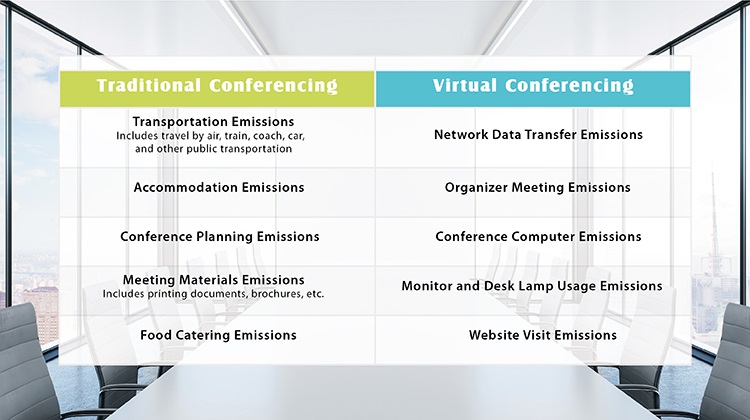Video conferencing was widely introduced to the masses during the COVID pandemic, aiding us in the darkest times. Now that the world has returned to its normal state, most people now attend both in-person and virtual events. Though there are undoubtedly aspects of in-person meetings that virtual meetings cannot replace, video conferencing in business has advantages over in-person meetings that make it indispensable and practical in the long term.
Environmental Advantages
To begin with, it is indisputable that video conferences are greener than traditional meetings. A Cornell-led study reveals that replacing an in-person conference with a virtual one can drastically reduce the carbon footprint by 94% and energy use by 90%.
In comparing the carbon emissions that both types of conferences generate, we can see that traditional conferencing has an overall higher environmental impact, largely due to travel.

We can see from the chart above that video conferencing doesn’t include a large portion of the emissions from traditional conferencing, while traditional conferencing includes many of the emissions included in video conferencing. As global citizens, we should try our best to reduce our environmental impact and preserve the planet. If meetings don’t require face-to-face communication, then it’s best to keep conferencing online.
Financial Benefits
Next, there are significant financial benefits when comparing virtual meetings and traditional business meetings. A face-to-face business meeting typically requires travel expenses and hotel accommodation, not to mention many other coordination expenses.
According to Statista, the cost per attendee of the meeting/conference industry in Europe lands around USD$557–745 depending on the type of event. That is often enough money for a small to medium-sized business to buy video conferencing equipment and software for the entire company for a year. By focusing on video conferencing, a business can drastically decrease financial expenses.
Convenience
Finally, video conferencing inarguably offers more accessibility than in-person meetings. Those who have organized an in-person event have all experienced the complex proceedings involved in the process, from booking hotels, catering, and meeting rooms to organizing every tiny detail to ensure everything goes right. For online conferences, you can use a conferencing system and even just a computer to achieve a similar level of communication. A survey conducted by vFairs states that 77.2% prefer virtual events because of how easy they are to attend. Unless absolutely necessary, video conferencing is a convenient and effective way of connecting and communicating with colleagues.
Video Conferencing Is Here to Stay

Though accelerated by the pandemic, video conferencing have earned a permanent spot in a modern-day business environment. Through video conferencing, businesses can become more sustainable, cost-saving, and efficient through conducting video conferences. With so many people relying on the ease of attendance of online conferences, we expect at least half of the meetings and conventions will continue to stay online even after the pandemic ends, and we can expect video conferencing to continue to evolve and revolutionize the way humans connect with one another.